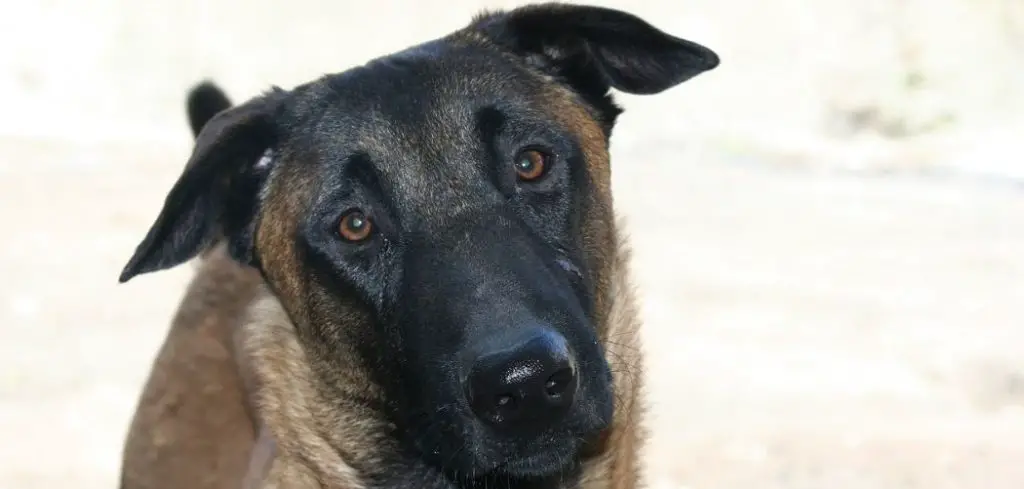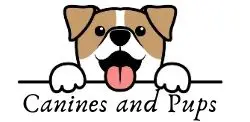If your dog is suddenly drooling and not eating, this combination of symptoms can be alarming.
Understanding the possible causes of dog drooling and not eating is essential, as these signs often point to an underlying issue that may need urgent attention.
We outline why your dog is drooling and not eating, outline common causes, and share what you should do and when to seek veterinary help.
Table of Contents
Dog Drooling and Not Eating: What Does It Mean?
Occasional drooling in dogs can be normal, especially for certain breeds or after eating or exercise. However, excessive drooling (hypersalivation) accompanied by a lack of appetite can be a red flag.
When your dog is drooling excessively and refusing food, it often signals discomfort or illness.
These symptoms together could indicate anything from dental problems to serious internal medical conditions.
It’s important to monitor other symptoms that may appear alongside dog drooling and not eating, such as:
Vomiting
Lethargy
Bad breath
Pawing at the mouth
Swollen face or jaw
Diarrhea
Whining or crying
Weight loss

Common Causes of Dog Drooling and Not Eating
1. Dental Issues
One of the most common reasons your dog is drooling and not eating is dental disease.
Issues like infected gums, broken teeth, or oral abscesses can make eating painful and lead to excessive drooling.
Signs of dental issues include:
Red or bleeding gums
Loose or missing teeth
Foul breath
Swollen face or jaw
Difficulty chewing
Dental infections can be extremely painful for dogs and may cause them to avoid food altogether while drooling constantly due to discomfort.
If your dog shows signs of dental problems, schedule a vet check-up. Professional cleaning or extractions may be required.
2. Nausea or Gastrointestinal Upset
Dogs experiencing nausea often drool as a reflex, and they also tend to lose their appetite.
A dog that is drooling and not eating might have an upset stomach caused by:
Eating something inappropriate
Intestinal parasites
Inflammatory bowel disease
Motion sickness
Sudden change in diet
Nausea-induced drooling usually appears alongside symptoms like licking lips, swallowing frequently, or vomiting.
Withhold food for 12–24 hours (unless your dog is a puppy or senior), then reintroduce a bland diet. If nausea persists, contact your vet.
Related: Dog diarrhea and not eating (Explained)
3. Oral Injuries or Foreign Objects
Dogs love to chew things, and sometimes they bite into sharp or irritating objects that cause injury to the mouth or throat.
A foreign object stuck in the mouth, such as a splinter or piece of bone, can lead to excessive drooling and refusal to eat.
Look inside your dog’s mouth for:
Cuts
Swelling
Stuck objects (toys, sticks, bones)
Blood
Pain and inability to chew comfortably will cause your dog to drool and not eat food.
If you can see and safely remove the object, do so. If not, don’t force it—seek veterinary assistance.
4. Heatstroke or Overheating
A dog drooling and not eating in hot weather may be suffering from heatstroke.
Excessive heat can cause dehydration, panting, drooling, and complete loss of appetite.
Symptoms of heatstroke include:
Drooling and heavy panting
Red gums
Lethargy or collapse
Vomiting
High body temperature
Cool your dog down immediately—use cool (not cold) water, move them to a shaded or air-conditioned area, and offer small amounts of water. Call your vet urgently.
5. Infections
Systemic infections like fever or upper respiratory infections can also cause your dog to drool and refuse food.
A sick dog may have a sore throat, difficulty swallowing, or body aches.
Common infections include:
Canine distemper
Kennel cough
Bacterial infections
Tonsillitis
These conditions may cause drooling, coughing, nasal discharge, and fatigue.
Veterinary diagnosis and treatment with antibiotics or antivirals may be required depending on the infection.
Related: Dog eating grass and not eating (Explained)
6. Poisoning or Toxin Ingestion
If your dog is drooling and not eating all of a sudden, poisoning could be the cause.
Ingesting household chemicals, toxic plants, spoiled food, or human medications can lead to drooling as the body reacts to the toxin.
Signs of poisoning include:
Excessive drooling
Vomiting or diarrhea
Muscle tremors
Collapse or seizures
Discolored gums
Seek emergency veterinary care immediately. Bring the packaging or name of the substance if possible.
7. Liver or Kidney Disease
Chronic conditions like kidney disease or liver problems can cause symptoms such as drooling and loss of appetite in dogs.
These illnesses build up toxins in the bloodstream, leading to nausea and salivation.
Other signs include:
Weight loss
Increased thirst or urination
Vomiting
Pale or yellow gums
Bad breath (often metallic or ammonia-like)
Blood tests and urine analysis can help diagnose these conditions. Treatment involves managing the underlying disease with medications and a special diet.
8. Pain or Stress
Dogs in pain—whether due to injury, arthritis, or internal discomfort—often show signs such as drooling and not eating.
Similarly, stress and anxiety can make a dog refuse food and exhibit nervous behaviors like drooling, shaking, or pacing.
Triggers for stress-related symptoms:
Loud noises
Change in environment
Separation anxiety
Traveling
Introduction of new pets or people
Identify the source of stress and minimize it. Use calming tools like pheromone diffusers or talk to your vet about anxiety medication if symptoms persist.
9. Neurological Disorders
Diseases that affect the nervous system, such as nerve damage, brain tumors, or seizures, may cause your dog to drool and not eat due to difficulty swallowing or altered brain function.
Watch for:
Head tilting
Loss of coordination
Abnormal eye movement
Behavioral changes
Seizures
Neurological symptoms require immediate veterinary evaluation. Imaging and neurological exams may be needed for diagnosis.
Dog Drooling and Not Eating: What to Do
If your dog is drooling and refusing food, here’s what you should do:
Observe their behavior: Note any other symptoms like vomiting, diarrhea, or lethargy.
Inspect the mouth: Check for signs of dental disease, injury, or foreign objects.
Offer bland food: Try a mild diet of boiled chicken and rice to see if appetite improves.
Provide water: Make sure your dog stays hydrated, especially if they are drooling heavily.
Keep them cool: If it’s hot, reduce the risk of heatstroke by providing a cool environment.
Limit activity: Rest helps the body recover if illness or nausea is present.
Contact your vet: If symptoms last more than 24 hours or worsen, get professional help.
Related: Dog drinking alot of water and not eating (Explained)
When to Seek Veterinary Help Immediately
Take your dog to the vet right away if they are:
Drooling excessively and not eating for over 24 hours
Showing signs of pain, bloating, or distress
Vomiting or having diarrhea alongside drooling
Refusing water
Lethargic or unresponsive
Suspected to have ingested something toxic
Displaying neurological symptoms
Puppies, senior dogs, and dogs with pre-existing health issues are especially vulnerable and should be seen sooner.
Key Takeaway: Dog Drooling and Not Eating
There are many reasons why a dog is drooling and not eating, ranging from simple oral discomfort to serious medical conditions.
While some causes like mild nausea or stress may pass on their own, others—like poisoning or infections—require urgent treatment.
If your dog refuses food and drools excessively, don’t wait too long.
A timely veterinary check-up can prevent complications and help your dog feel better quickly.
Keeping an eye on your dog’s behavior, maintaining good dental hygiene, providing a balanced diet, and avoiding toxins can help prevent many of the issues linked to dog drooling and not eating.
